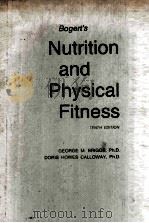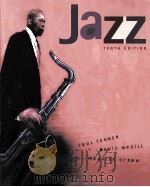《Physical Diagnosis Tenth Edition》
| 作者 | 编者 |
|---|---|
| 出版 | William Wood And Company |
| 参考页数 | 529 |
| 出版时间 | 1930(求助前请核对) 目录预览 |
| ISBN号 | 无 — 求助条款 |
| PDF编号 | 812505518(仅供预览,未存储实际文件) |
| 求助格式 | 扫描PDF(若分多册发行,每次仅能受理1册) |

CHAPTER ⅠDATA RELATING TO THE BODY AS A WHOLE1
Ⅰ.Weight1
1.Causes of Gain in Weight1
2.Causes of Loss in Weight2
Ⅱ.Temperature—Technique and Sources of Error2
1.Causes of Fever2
2.Subnormal Temperature4
3.Chills and Their Causes4
4.Night and Day Sweats4
CHAPTER ⅡTHE HEAD,FACE,AND NECK5
Ⅰ.The Cranial Vault5
1.Size,Shape5
2.Fontanels6
3.Hair6
Ⅱ.The Forehead7
Ⅲ.The Face as a Whole8
Ⅳ.Movements of the Head and Face13
Ⅴ.The Eyes14
(a)Ocular Motions17
(b)The Retina17
Ⅵ.The Nose18
Ⅶ.The Lips20
Ⅷ.The Teeth22
Ⅸ.The Breath23
Ⅹ.The Tongue23
Ⅺ.The Gums25
Ⅻ.The Buccal Cavity26
ⅩⅢ.The Tonsils and Pharynx28
ⅩⅣ.The Neck30
1.Glands31
2.Abscess or Scars33
3.Thyroid Tumors34
4.Torticollis34
5.Vertebral Tuberculosis35
6.Branchial Cysts and Fistul?35
7.Actinomycosis36
8.Cervical Rib36
9.Inflammatory or Dropsical Swelling of Neck37
CHAPTER ⅢTHE ARMS AND HANDS;THE BACK38
THE ARMS38
Ⅰ.Paralysis38
Ⅱ.Wasting of One Arm40
Ⅲ.Contractures40
Ⅳ.CEdema41
Ⅴ.Tumors41
Ⅵ.Miscellaneous Lesions of the Forearm43
THE HANDS45
Ⅰ.Evidence of Occupation45
Ⅱ.Temperature and Moisture45
Ⅲ.Movements45
Ⅳ.Deformities52
THE NAILS57
THE BACK58
Ⅰ.Stiff Back58
Ⅱ.Sacro-iliac Disease59
Ⅲ.Spinal Curvatures60
Ⅳ.Tumors of the Back60
Ⅴ.Prominent Scapula61
Ⅵ.Scaphoid Scapula61
Ⅶ.Spina Bifida61
CHAPTER ⅣTHE CHEST TECHNIQUE AND GENERAL DIAGNOSIS63
INTRODUCTION63
Ⅰ.Methods of Examining the Thoracic Organs63
Ⅱ.Regional Anatomy of the Chest63
INSPECTION66
Ⅰ.Size66
Ⅱ.Shape66
1.The Rachitic Chest67
2.The Paralytic Chest67
3.The Barrel Chest68
Ⅲ.Deformities69
1.Curvature of the Spine69
2.Flattening of One Side of the Chest70
3.Prominence of One Side of the Chest71
4.Local Prominences71
Ⅳ.Respiratory Movements72
1.Normal Respiration72
2.Anomalies of Expansion72
(a)Diminished Expansion73
(b)Increased Expansion73
3.Dyspnoea73
Ⅴ.Relation of Dyspnoea to Cyanosis75
Ⅵ.The Respiratory Rhythm76
1.Asthmatic Breathing76
2.Cheyne-Stokes Breathing76
3.Restrained Breathing77
4.Stridulous Breathing78
Ⅶ.Diaphragmatic Movements(Litten's Phenomenon)78
Ⅷ.The Cardiac Movements80
1.Normal Cardiac Impulse80
2.Displacement of the Cardiac Impulse84
3.Apex Retraction85
4.Epigastric Pulsation86
5.Uncovering of the Heart86
Ⅸ.Aneurism and Other Causes of Abnormal Thoracic Pulsation87
Ⅹ.The Peripheral Vessels88
1.Inspection of the Veins88
2.Arterial Phenomena90
3.Capillary Pulsation91
Ⅺ.The Skin and Mucous Membranes92
1.Cyanosis92
2.CEdema93
3.Pallor93
4.Jaundice94
5.Scars and Eruptions94
Ⅻ.Enlarged Glands94
CHAPTER ⅤPALPATION AND STUDY OF THE PULSE96
Ⅰ.Palpation96
1.The Apex Beat96
2.Thrills97
3.Tactile Fremitus98
4.Friction,Pleural or Pericardial100
5.Palpable Rales101
6.Joint Frictions and Tendon Frictions101
7.Local Muscular Spasm101
8.Tender Points101
Ⅱ.The Pulse102
1.The Rate104
2.Rhythm104
3.Compressibility104
4.Size and Shape of Pulse Wave104
5.Tension106
6.Size and Position of Artery107
7.Condition of Artery Walls108
Ⅲ.Arterial Pressure and the Instruments for Measuring it109
1.Systolic or Maximum Pressure111
2.Diastolic Pressure112
3.Normal Readings112
4.Use of Data112
CHAPTER ⅥARTERIOGRAMS,PHLEBOGRAMS AND ELECTROCARDIOGRAMS115
Ⅰ.Heart Block116
Ⅱ.Auricular Fibrillation119
Ⅲ.Paroxysmal Tachycardia120
Ⅳ.Premature Beats(Extrasystoles)121
Ⅴ.Coupling of Heart Beats123
Ⅵ.Alternation123
Ⅶ.Sinus Arrhythmia124
Ⅷ.Ventricular Preponderance124
Ⅸ.Evidences of Coronary Disease124
CHAPTER ⅦPERCUSSION125
Ⅰ.Technique125
1.Mediate Percussion Immediate Percussion125
2.Auscultatory Percussion131
3.Palpatory Percussion132
Ⅱ.Percussion-Resonance of the Normal Chest133
1.Vesicular Resonance133
2.Dulness and Flatness134
3.Tympanitic Resonance136
4.Kronig's Isthmus136
5.Cracked-pot Resonance139
6.Amphoric Resonance140
Ⅲ.Sense of Resistance140
CHAPTER ⅧAUSCULTATION142
Ⅰ.Mediate and Immediate Auscultation142
Ⅱ.Selection of a Stethoscope143
Ⅲ.The Use of the Stethoscope147
1.Selective Attention and What to Disregard147
2.Muscle Sounds150
3.Other Sources of Error151
Ⅳ.Auscultation of the Lungs152
1.Respiratory Types153
(a)Vesicular Breathing154
(b)Tubular Breathing156
(c)Broncho-vesicular Breathing157
(d)Asthmatic Breathing157
(e)Cog-wheel Breathing157
(f)Amphoric Breathing158
(g)Metamorphosing Breathing158
Ⅴ.Differences between the Right and the Left Chest158
Ⅵ.Pathological Modifications of Vesicular Breathing159
1.Exaggerated Vesicular Breathing159
2.Diminished Vesicular Breathing160
Ⅶ.Bronchial Breathing in Disease161
Ⅷ.Broncho-vesicular Breathing in Disease162
Ⅸ.Amphoric Breathing162
Ⅹ.Rales163
1.Coarse Crackles163
2.Fine Crackles164
3.Musical165
Ⅺ.Cough.Effects on Respiratory Sounds166
Ⅻ.Pleural Friction166
ⅩⅢ.Auscultation of the Voice Sound167
1.The Whispered Voice167
2.The Spoken Voice168
3.Egophony169
ⅩⅣ.Phenomena Peculiar to Pneumo-hydrothorax169
1.Succussion169
2.Metallic Tinkle170
3.The Lung Fistula Sound170
CHAPTER ⅨAUSCULTATION OF THE HEART171
Ⅰ.The Valve Areas171
Ⅱ.Normal Heart Sounds172
Ⅲ.Modifications in the Intensity of the Heart Sounds174
1.Mitral First Sound174
(a)Strengthening174
(b)Shortening175
(c)Doubling175
2.The Second Sounds at the Base of the Heart175
(a)Physiological Variations177
(b)Pathological Variations177
Accentuation of Pulmonic Second Sound177
Weakening of Pulmonic Second Sound178
Accentuation of the Aortic Second Sound178
Weakening of the Aortic Second Sound178
3.Modifications in Rhythm of Cardiac Sounds and Doubling of Second Sounds179
4.Metallic Quality of the Heart Sounds180
5."Muffled"Heart Sounds180
Ⅳ.Sounds Audible Over the Peripheral Vessels181
CHAPTER ⅩAUSCULTATION OF THE HEART,CONTINUED182
CARDIAC MURMURS182
Ⅰ.Terminology182
Ⅱ.Mode of Production182
1.Place of Murmurs in the Cardiac Cycle184
2.Area of Transmission185
3.Intensity,Quality,and Length187
4.Relation to Heart Sounds189
5.Effects of Respiration,Exertion,and Position189
6.Metamorphosis of Murmurs190
Ⅲ.Functional Murmurs190
Ⅳ.Cardio-Respiratory Murmurs192
Ⅴ.Arterial Murmurs193
CHAPTER ⅪESTABLISHMENT AND FAILURE OF COMPENSATION IN VALVULAR DISEASE OF THE HEART194
Ⅰ.Compensation Not Yet Established194
Ⅱ.The Period of Compensation194
Ⅲ.Failure of Compensation195
Ⅳ.Hypertrophy and Dilatation196
1.Causes196
2.Signs197
3.Dilatation of the Heart199
(a)Predominant Dilatation of the Left Ventricle201
(b)Predominant Dilatation of the Right Ventricle202
CHAPTER ⅫTHE CLASSIFICATION OF CARDIOVASCULAR DISEASES;RHEUMATIC HEART DISEASE204
Ⅰ.Five Groups of Diseases Due to Circulatory Weakness204
Ⅱ.Rheumatic Heart Disease205
1.Acute Endocarditis206
2.Rheumatic Pancarditis of Children206
3.Mitral Endocarditis(Rheumatic Type)207
(a)Early Stages207
(b)Later Stages207
(c)Late Mitral Disease—Stenosis214
4.Aortic Disease(Rheumatic Type)222
1.Aortic Regurgitation222
2.Aortic Stenosis225
5.Diseases of the Tricuspid and Pulmonary Valves231
1.Tricuspid Regurgitation231
2.Tricuspid Stenosis234
3.Pulmonary Regurgitation234
6.Combined Valvular Lesions235
1.Double Mitral Disease236
2.Aortic Regurgitation with Mitral Disease237
3.Aortic Regurgitation with Aortic Stenosis237
7.Pericarditis238
1.Dry or Fibrinous238
2.Pericardial Effusion240
3.Adherent Pericardium245
CHAPTER ⅩⅢSYPHILITIC HEART DISEASE248
Ⅰ.Syphilitic Aortitis with or without Aneurism248
1.Aortic Regurgitation(Syphilitic Type)248
2.Physical Signs249
3.Capillary Pulsation250
4.Palpation251
5.Percussion and Auscultation252
Ⅱ.Complications254
CHAPTER ⅩⅣSYPHILITIC AORTITIS WITH ANEURISM256
ⅠInspection and Palpation256
1.Abnormal Pulsation256
2.Tumor257
3.Thrill257
4.Diastolic Shock257
5.Tracheal Tug259
Ⅱ.Percussion260
Ⅲ.Auscultation260
Ⅳ.Radioscopy261
Ⅴ.Diagnosis262
CHAPTER ⅩⅤHYPERTENSIVE CARDIO-VASCULAR DISEASE CORONARY DISEASE268
Ⅰ.Physical Signs268
Ⅱ.Fatty Degeneration271
Ⅲ.Senile or Decrescent Arteriosclerosis271
Ⅳ.Coronary Disease271
CHAPTER ⅩⅥNEPHROGENOUS HEART DISEASE,GOITRE HEART,CONGENITAL MALFORMATIONS,MISCELLANEOUS CARDIAC LESIONS272
Ⅰ.Nephritic(or Nephrogenous)Heart Disease272
Ⅱ.Goitre Heart272
Ⅲ.Congenital Heart Disease273
1.Pulmonary Stenosis274
2.Aortic Coarctation274
3.Patent Ductus Arteriosus274
4.Defective Interventricular Septum275
5.Defective Interauricular Septum275
6.Transposition of the Arterial Trunks275
7.Hypoplasia of the Aorta275
Ⅳ.Other Diseases which Weaken the Heart275
1.Acute Myocarditis275
Ⅴ.Miscellaneous Affections of the Heart276
1.Tachycardia276
2.Cardiac Symptoms of Nervousness277
Post Infectious Tachycardia,Tobacco,(Supposed Effect)Athlete's Heart278
3.Bradycardia279
4.Heart Block279
5.Palpitation279
CHAPTER ⅩⅦDISEASES OF THE LUNGS BRONCHITIS,PNEUMONIA,TUBERCULOSIS281
Ⅰ.Tracheitis281
Ⅱ.Bronchitis281
1.Acute281
2.Chronic284
Ⅲ.Croupous Pneumonia284
(a)Inspection285
(b)Palpation286
(c)Percussion286
(d)Auscultation287
(e)Differential Diagnosis290
Ⅳ.Inhalation Pneumonia291
Ⅴ.Broncho-Pneumonia292
Ⅵ.Pulmonary Tuberculosis295
1.Incipient Tuberculosis295
2.Moderately Advanced Cases297
3.Advanced Phthisis300
4.Hilus Tuberculosis304
5.Fibroid Phthisis305
6.Phthisis with Predominant Pleural Thickening306
7.Emphysematous Form of Phthisis307
8.Phthisis with Anomalous Distribution of the Lesions308
9.Acute Pulmonary Tuberculosis308
CHAPTER ⅩⅧ(DISEASES OF THE LUNGS,CONTINUED)309
Ⅰ."The Barrel Chest"and Its Relation to Emphysema309
1.Barrel Chest with Arteriosclerosis and Asthma312
2.Interstitial Emphysema312
3.Complementary Emphysema313
4.Acute Pulmonary Tympanites313
Ⅱ.Bronchial Asthma313
Ⅲ.Syphilis of the Lung314
Ⅳ.Bronchiectasis315
Ⅴ.Examination of Sputa317
1.Origin317
2.Quantity317
3.Odor317
4.Gross Appearance317
5.Microscopic Examination319
CHAPTER ⅩⅨDISEASES AFFECTING THE PLEURAL CAVITY322
Ⅰ.Hydrothorax322
Ⅱ.Pneumothorax322
Ⅲ.Pneumohydrothorax or Pneumopyothorax324
1.Differential Diagnosis326
Ⅳ.Pleurisy328
1.Dry Pleurisy328
2.Pleuritic Effusion330
(a)Percussion330
(b)Auscultation335
(c)Inspection and Palpation336
(d)Interlobar Empyema338
3.Pleural Thickening339
4.Encapsulated Pleural Effusions341
5.Pulsating Pleurisy342
6.Differential Diagnosis of Pleural Effusions342
7.Carcinoma of the Pleura344
8.Cancer of the Bronchi and Lung345
9.Echinococcus of the Pleura345
10.Actinomycosis of the Pleura345
Ⅴ.Cyto-Diagnosis of Pleural and Other Fluids345
1.Technique346
2.Interpretation of Results347
CHAPTER ⅩⅩABSCESS,GANGRENE,MEDIASTINAL TUMORS,PULMONARY ATELECTASIS,CEdema,AND HYPOSTATIC CONGESTION349
Ⅰ.Abscess and Gangrene of the Lung349
Ⅱ.Neoplasms of the Mediastinum350
Ⅲ.Atelectasis351
Ⅳ.CEdema of the Lungs352
Ⅴ.Hypostatic Pneumonia352
CHAPTER ⅩⅪTHE ABDOMEN IN GENERAL,THE BELLY WALLS,PERITONEUM,OMENTUM,AND MESENTERY354
Ⅰ.Examination of the Abdomen in General354
1.Technique354
(a)Inspection354
(b)Palpation356
2.What can be felt Beneath the Normal Abdominal Walls357
3.Palpable Lesions of the Belly Walls358
4.Abdominal Tumors359
(a)Percussion361
Ⅱ.Diseases of the Peritoneum362
1.Peritonitis,Local or General362
2.Ascites363
3.Cancer and Tuberculosis364
Ⅲ.The Mesentery365
1.Glands365
2.Thrombosis365
CHAPTER ⅩⅫTHE STOMACH,LIVER,AND PANCREAS366
Ⅰ.The Stomach366
1.Inspection and Palpation366
2.Use of the Stomach Tube367
3.Examination of Contents371
(a)Qualitative Tests372
(b)Quantitative Estimation of Free HC1 and of Total Acidity372
4.X-ray Examination of the Stomach373
5.Incidence and Diagnosis of Gastric Diseases375
Ⅱ.The Liver377
1.Pain378
2.Enlargement378
3.Atrophy381
4.Portal Obstruction381
5.Jaundice382
6.Loss of Flesh and Strength384
7.The Infection Group of Symptoms384
8.Cerebral Symptoms of Liver Disease384
Ⅲ.The Gall Bladder and Bile Ducts384
1.Differential Diagnosis of Biliary Colic385
2.Enlarged Gall Bladder385
3.Cholecystitis386
Ⅳ.The Pancreas386
1.Cancer387
2.Acute Pancreatic Disease387
3.Cyst387
4.Bronzed Diabetes387
CHAPTER ⅩⅩⅢTHE INTESTINES,SPLEEN,AND KIDNEY389
Ⅰ.The Intestines389
1.Data for Diagnosis389
2.Appendicitis391
3.Chronic Appendicitis393
4.Intestinal Obstruction393
5.Cancer394
6.Examination of Contents394
7.Parasites396
Ⅱ.The Spleen401
1.Palpation401
2.Percussion402
3.Causes of Enlargement403
4.Differential Diagnosis of the Various Causes of Enlargement404
Ⅲ.The Kidney405
1.Incidence and Data405
2.Characteristics Common to Most Tumors of the Kidney406
(a)Malignant Disease407
(b)Hydronephrosis and Cystic Kidney409
(c)Perinephritic Abscess410
(d)Abscess of the Kidney410
(e)Floating Kidney411
3.Renal Colic and Other Renal Pain411
4.Examination of the Urine413
(a)Amount and Weight413
(b)Optical Properties414
(c)Significance of Sediments(Gross)415
5.Pyuria416
6.H?maturia417
7.The"Red Test"418
8Chemical Examination of the Urine418
(a)Reaction of Normal Urine418
(b)Tests for Albuminuria419
(c)Significance of Albuminuria420
(d)Significance of Albumosuria421
(e)Glycosuria and Its Significance421
(f)The Acetone Bodies422
(g)Other Constituents422
9.Microscopic Examination of Urinary Sediments423
10.Summary of the Urinary Pictures Most Useful in Diagnosis427
CHAPTER ⅩⅩⅣTHE BLADDER,RECTUM,AND GENITAL ORGANS431
Ⅰ.The Bladder431
1.Incidence and Data431
2.Distention431
3.The Urine as Evidence of Bladder Disease433
Ⅱ.The Rectum435
1.Symptoms which should Suggest an Examination435
2.Methods436
Ⅲ.The Male Genitals437
1.The Penis438
2.The Testes and Scrotum438
Ⅳ.The Female Genitals440
1.Methods440
2.Lesions440
(a)In the External Genitals440
(b)In the Uterus441
(c)In the Fallopian Tubes443
(d)In the Ovaries443
CHAPTER ⅩⅩⅤTHE LEGS AND FEET446
Ⅰ.The Legs446
1.Hip446
2.Groin446
3.Thigh447
4.Knee451
5.Lower Leg452
Ⅱ.The Feet456
1.The Toes460
CHAPTER ⅩⅩⅥTHE BLOOD462
Ⅰ.Examination of the Blood462
1.H?moglobin462
2.Study of the Stained Blood Film464
3.Counting Reticulated Erythrocytes470
4.Counting the White Corpuscles470
5.Counting the Red Corpuscles471
6.Testing Fragility of Red Cells472
Ⅱ.Interpretation of These Data472
1.Secondary An?mia472
2.Chlorosis473
3.Pernicious An?mia473
4.Leucocytosis474
5.Lymphocytosis475
6.Eosinophilia476
7.Leuk?mia476
Ⅲ.The Widal Reaction477
Ⅳ.The Wassermann Reaction478
Ⅴ.Blood Parasites479
1.Malaria479
2.Trypanosomiasis479
3.Filariasis479
CHAPTER ⅩⅩⅦTHE JOINTS480
Ⅰ.Examination of the Joints480
1.Methods and Data480
2.Technique481
Ⅱ.Joint Diseases484
1.Infectious Arthritis485
2.Atrophic Arthritis488
3.Hypertrophic Arthritis490
4.Gouty Arthritis496
5.H?mophilic Arthritis496
6.Relative Frequency of the Various Joint Lesions496
CHAPTER ⅩⅩⅧTHE NERVOUS SYSTEM497
Ⅰ.Examination of the Nervous System497
1.Disorders of Motion497
2.Disorders of Sensation500
3.Reflexes501
4.Electrical Reactions506
5.Speech and Handwriting506
6.Trophic Vasomotor Disorders507
7.The Examination of Psychic Functions;Coma507
8.Examination of the Cerebro-Spinal Fluid510
INDEX513
1930《Physical Diagnosis Tenth Edition》由于是年代较久的资料都绝版了,几乎不可能购买到实物。如果大家为了学习确实需要,可向博主求助其电子版PDF文件(由 1930 William Wood And Company 出版的版本) 。对合法合规的求助,我会当即受理并将下载地址发送给你。
高度相关资料
-

- CABOT AND ADAMS PHYSICAL DIAGNOSIS
- 1942 THE WILLIAMS
-

- ECONOMICS TENTH EDITION
- 1987年 MCGRAW-HILL BOOK COMPANY
-

- THE PRINCIPLES AND METHODS OF PHYSICAL DIAGNOSIS SECOND EDITION
- 1957 W.B.SAUNDERS COMPANY
-

- MANUAL OF PEDIATRIC PHYSICAL DIAGNOSIS
- 1957 THE YEAR BOOK PUBLISHERS INC
-
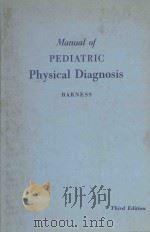
- Manual of Pediatric Physical Diagnosis Third Edition
- 1966 YEAR BOOK MEDICAL PUBLISHERS
-

- PHYSICAL DIAGNOSIS
- 1946 W.B.SAUNDERS COMPANY
-
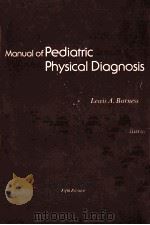
- MANUAL OF PEDIATRIC PHYSICAL DIAGNOSIS FIFTH EDITION
- 1981 YEAR BOOK MEDICAL PUBLISHERS
-

- DYNAMIC PHYSICAL EDUCATION FOR ELEMENTARY SCHOOL CHILDREN TENTH EDITION
- 1992 MACMILLAN PUBLISHING COMPANY
-

- PHYSICAL DIAGNOSIS EIGHTH EDITION
- 1923 WILLIAM WOOD AND COMPANY
-
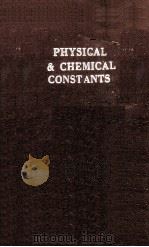
- TABLES OF PHYSICAL AND CHEMICAL CONSTANTS AND SOME MATHEMATICAL FUNCTIONS TENTH EDITION
- 1951 VAN CHONG BOOK COMPANY
提示:百度云已更名为百度网盘(百度盘),天翼云盘、微盘下载地址……暂未提供。➥ PDF文字可复制化或转WORD
